There are many advantages to traveling the country in a Class A motorhome. You have panoramic views, comfortable seating, and plenty of space! But one thing you don’t get is good fuel economy. Of all the classes of RVs out there, the Class A motorhome is likely the worst in terms of fuel efficiency. Fortunately, there are some things you can do to improve your fuel economy while enjoying the benefits of a Class A motorhome. Let’s break it down:
- 1) Average MPG for a Class A Gasoline Motorhome
- 2) Average MPG for a Class A Diesel Pusher Motorhome
- 3) What Affects the Fuel Economy of a Class A Motorhome?
- 4) How Much Gas Does a Class A Motorhome Typically Hold?
- 5) How to Save Money on Gas for Your RV
- 6) How to Improve Your RV’s Gas Mileage
- 7) Account for Fuel Costs Before Hitting The Road
Average MPG for a Class A Gasoline Motorhome
Depending on size, weight, and other variables, large gasoline-powered Class A motorhomes typically get between 6-10 miles per gallon in ideal conditions. Unfortunately, there are outside factors that can decrease your fuel economy. Hills, strong winds, and poor weather can all play a role.
Average MPG for a Class A Diesel Pusher Motorhome
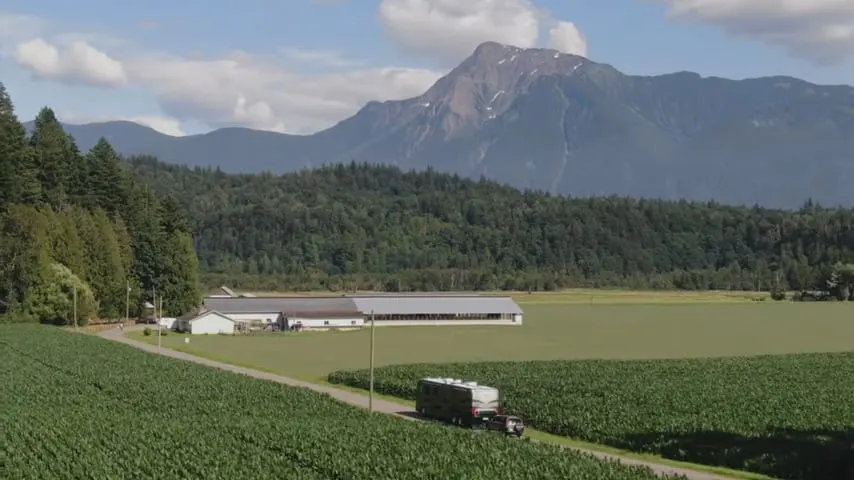
A diesel pusher typically gets slightly better fuel mileage than a gasoline-powered Class A motorhome.
If you want the perks of a Class A motorhome with slightly better fuel economy (plus a smoother ride and higher-end equipment in general), a diesel pusher is the way to go. Although still not great, a diesel engine is slightly more fuel-efficient than a gas engine. You can expect an average of between 7-12 mpg for a Class A diesel pusher, of course depending on size and weight.
What Affects the Fuel Economy of a Class A Motorhome?
There are lots of things that impact your Class A motorhome’s fuel economy. As we mentioned above, having a gas versus diesel engine is one factor. Diesel engines have a slight edge over gas. However, the added cost of more expensive diesel fuel in much of the country should also be considered. And of course the higher cost of a diesel motorhome itself.
Other factors include the weight and length of the RV. The larger and heavier your RV, the lower your gas mileage will be. You can save weight by bringing less cargo along. You can also save weight by emptying your water tanks before a long drive. Even driving with ¼ to ¾ of a fuel tank can improve gas mileage versus filling all the way up at the pump (but running out of fuel probably isn’t worth running the risk)!
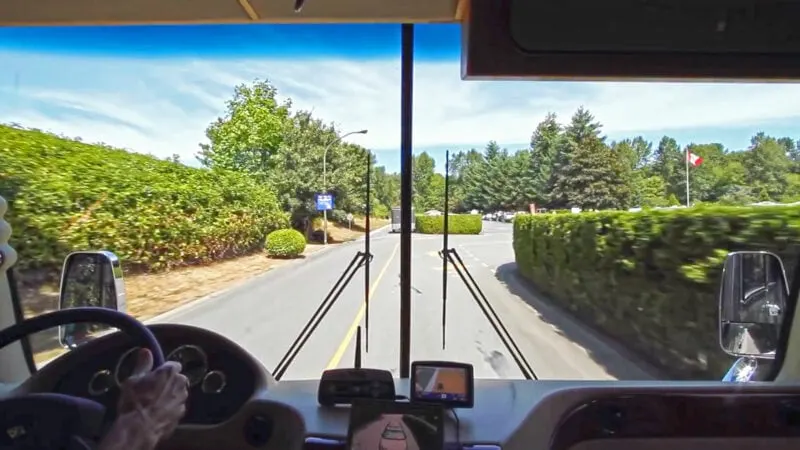
Even the decision to tow a car behind your motorhome can have an effect on your mileage. Very large, diesel-pushers barely notice the weight of a typical tow car. Buf it you have a smaller Class A RV, your towed could be contributing to noticeably lower fuel economy, especially if it’s heavy.
When the weather turns poor, your gas mileage will also suffer. Strong head- or cross-winds can quickly reduce your fuel mileage.
On the other hand, having a tailwind can provide a nice boost. You’ll also have improved fuel mileage when heading down in elevation. Going up mountains in an RV is not fun, but coming down helps even things out!
How Much Gas Does a Class A Motorhome Typically Hold?
Even though a Class A motorhome gets pretty lousy gas mileage, there is a bright side. The large fuel tank means you can travel quite far between fill-ups. (Of course, filling up is always a painful experience).
An average Class A fuel tank typically holds between 80 and 150 gallons. Even at 6 MPG, that means you can still go 480 – 900 miles on one tank! But because the motorhomes with the largest fuel tanks weigh more overall, they get the worst fuel economy, so there’s a practical limit on the range.
As an example, our 43′ diesel pusher gets 7 MPG and has a 150-gallon tank. That means we can drive as far as 900 miles with 20 gallons in reserve, or 1,000 miles with less than 10 gallons to spare (we did that once, and don’t recommend it)!
How to Save Money on Gas for Your RV
Since your motorhome goes through fuel so quickly, using money-saving tips is worth the effort for sure. These tips will help keep your overall trip costs down:
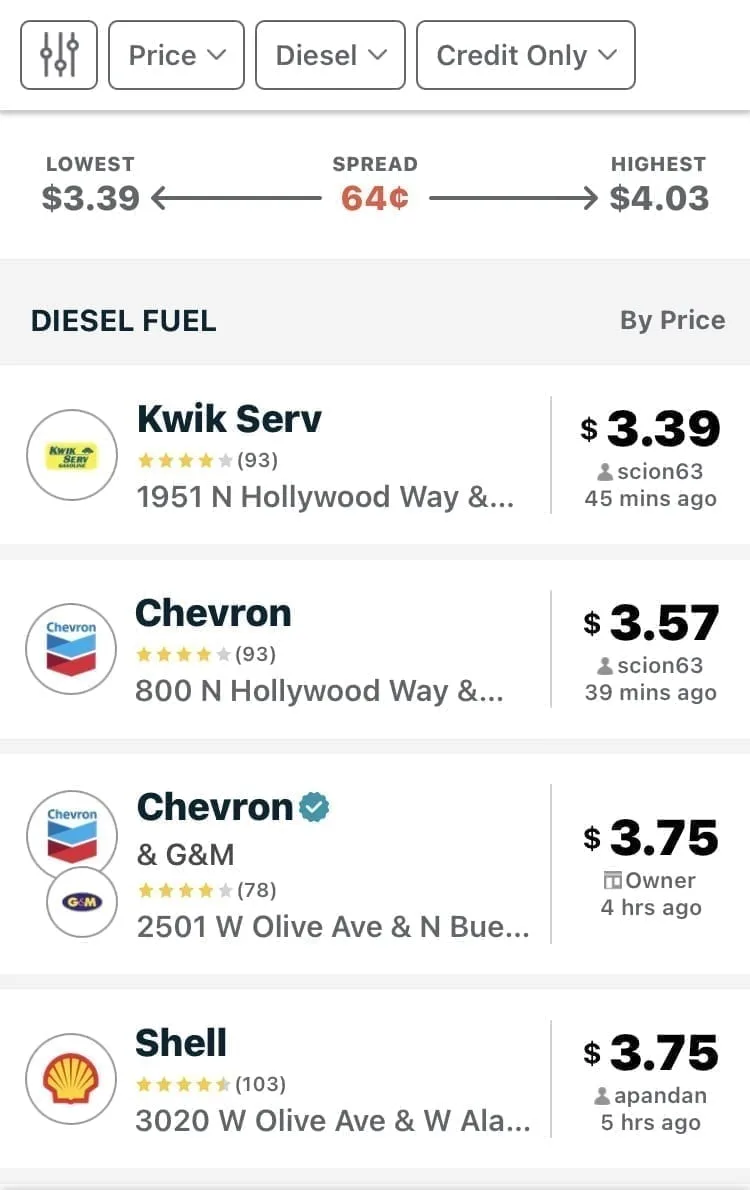
Apps like GasBuddy help us save money by showing price comparisons of nearby gas stations.
We recommend signing up for fuel discount programs. Many of these are totally free and will save you between 3 and 5 cents a gallon. Most gas stations offer a promotional card of some sort. There are even some credit cards that allow you to earn fuel discounts.
You can also use apps to find the best deals. Our favorite is GasBuddy. This free website, or smartphone/tablet app, can save you money by helping you find the cheapest gas or diesel around. Whatever your fuel range, you can be sure to take advantage of the best fuel price along your route. When you have a 150-gallon tank, that can make a huge difference. Using GasBuddy, we frequently buy fuel without a discount for less than we’d pay with one.
Another tip to save money on gas for your RV is all about timing. Buying gas midweek can save you money. Usually, Mondays or Tuesdays tend to be the cheapest gas days. It depends on the state you’re in. And if you can avoid filling up shortly before a holiday weekend, you’ll also save!
How to Improve Your RV’s Gas Mileage
It makes sense to do everything you can to improve your fuel mileage. Fortunately, you can use some simple tips before and during your trip to do just that:
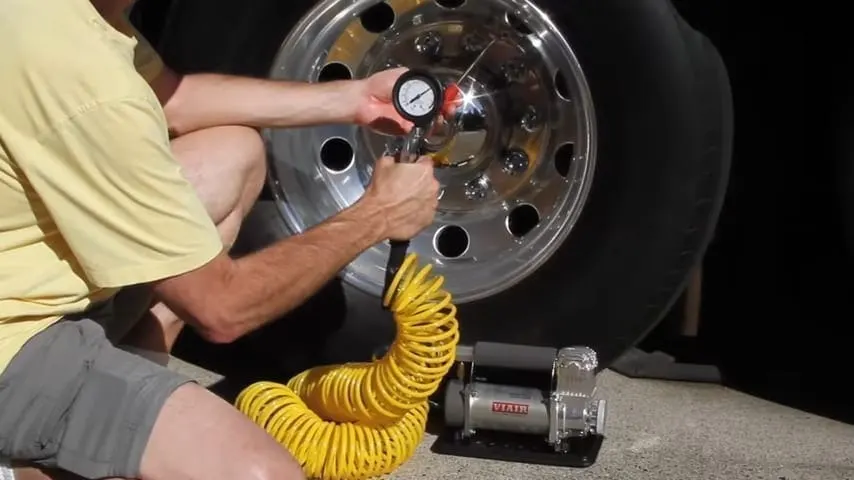
Keeping tires properly inflated helps to improve fuel economy!
Keep Up with Maintenance
Regular maintenance improves your mileage. Additionally, it can prevent other costly issues from popping up. Regular oil changes and changing air filters are two ways to improve your fuel mileage in your Class A motorhome.
When trying to improve fuel economy, it’s also very important to keep your tires properly inflated. During both travel and storage, having your tires at the proper PSI is a must. Maintaining the correct tire pressure on road trips noticeably improves your gas mileage. Not only that, but it will keep you safer and help your tires last longer.
Drive Slower
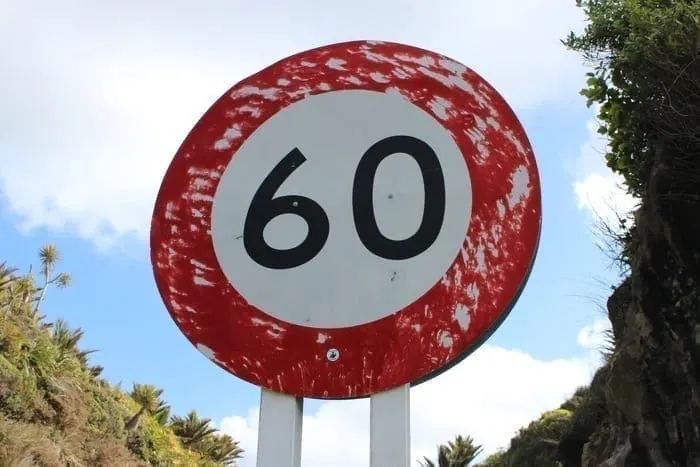
Driving below 60 mph offers improved fuel economy, and keeps us safer as well!
RVs aren’t known for their speed. Even so, we have certainly seen our fair share of people hauling down the freeway in their motorhomes. Driving more slowly can significantly improve your RV’s mileage. Aerodynamic drag (i.e. all that wind you’re pushing in front of that huge barn door they call the nose of a Class A RV) is a significant factor… and the faster you go, the worse it gets.
Typically, you’ll get the best fuel economy by staying below 60 miles per hour. And to be honest, this is probably a safer speed for RV travel anyway. So slow down and enjoy the ride! Your wallet will thank you!
Use Cruise Control
Frequently speeding up and slowing down uses more fuel. It’s also obnoxious for anyone unlucky enough to be stuck behind you. The simple fix? Cruise control. Cruise control will give you a smoother ride and improve your fuel economy at the same time.
However, cruise control works best on flat terrain, so it’s less helpful if you’re driving in the mountains. In this case, we recommend going slow and steady up the hills, and coasting safely down the other side (a good rule of thumb is to go DOWN a hill as fast, or as slow, as you went UP it).
Opt for a Diesel RV If Possible
As we mentioned before, diesel engines get better gas mileage than gas engines (even if only slightly). So a simple way to get better fuel economy is by choosing a motorhome with a diesel engine. While this is almost always more expensive, and shouldn’t be the only factor in your decision when choosing a motorhome, it can be considered a bonus perk.
Smaller Motorhomes Will Get Better Mileage
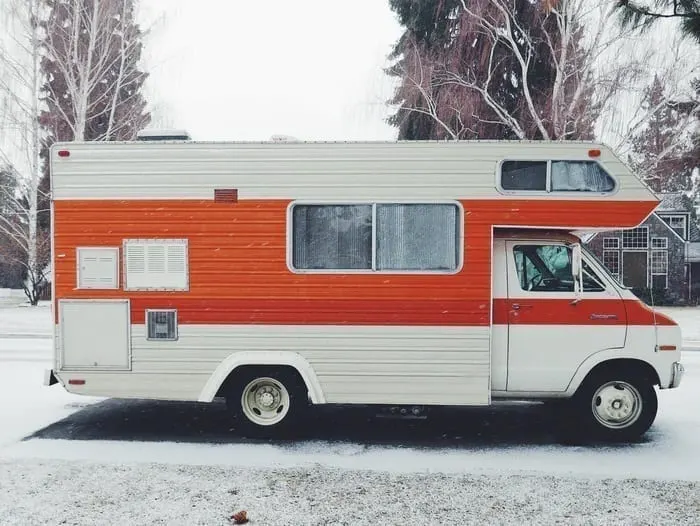
Smaller RVs get better gas mileage!
One more pro-tip for saving gas with your Class A RV is to choose a smaller motorhome. Smaller motorhomes are generally more fuel-efficient due to their smaller size and lower weight (not the least of which is that they have less room for you to put your stuff in… saving weight!).
Account for Fuel Costs Before Hitting The Road
Poor fuel economy is definitely a major downside of owning (and driving) a Class A motorhome. But fortunately, there are some simple tips and tricks to improve your fuel mileage. When traveling the country in a Class A RV, make sure you account for fuel costs before hitting the road.
Geek Out with Us Every Week
Join our newsletter to learn about all things RV-related. Every week we offer free tips, tricks, product reviews, and more to our online community of RVers. Whether this is your first time on the road or you’re a seasoned expert, we’d love for you to geek out with us!


Bill
Thursday 25th of November 2021
The jet fuel is only used on diesel engines
Bill
Thursday 25th of November 2021
If you want to get more power and better mileage per gallon ad some Jp5 jet fuel or pure kerosene.
Tom McMahon
Thursday 11th of February 2021
Our 40’ motor home averages about 9mpg, we used to pull a 30’ TT with a gas Excursion. That combo averaged 7mpg. We’re more comfortable in the DP and burning less fuel!!
TheRVgeeks
Thursday 11th of February 2021
That's great to hear, Tom! We'd kill for an extra 2mpg in fuel economy! ;) Safe travels!
Richard Hubert
Wednesday 10th of February 2021
We have a 38' 2005 Winnebago Class A gasoline model - with the Workhorse chassis.
Because we wanted more power for climbing mountains in the West we opted to have the Banks Power system installed several years ago - and glad we did. One of the benefits they noted was that not only does their system allow the engine to generate more power, but that it also helps improve fuel economy because the engine breathes more efficiently.. Their system includes new air filter, air filter box, exhaust headers, new exhaust system and some minor engine re-tuning.
After driving it all around the US (twice across the entire country), towing our 2007 Honda CRV - we have averaged about 6.8 mpg. We feel this is pretty good considering how well loaded we are and all the mountains encountered. We were really shocked last summer when we were able to go from Cortez, CO up rte.145 right up to Lizard Head Pass (10,233') while towing. Given that you lose about 4% of your engine power (in naturally aspirated gasoline engines) for each 1,000' in altitude gain we were amazed that our RV did that!
I appreciate the driving advice given above, as it is really important. While we are easily able to go 80 mph while towing on a flat interstate if we wanted, it is really important for safety and fuel economy to keep your RV speed down. That also allows one to appreciate the scenery more as well - and much of the West is just spectacular! (Though driving across West Texas on I-10 can really test one's patience. Be sure to have lots of "books on tape" to help one cope there)
Thanks guys!
TheRVgeeks
Thursday 11th of February 2021
Hi Richard! Thanks for sharing your experience. We've heard a lot of good things about the Banks Power system, but firsthand experiences are the best.
Drew
Wednesday 10th of February 2021
Hi guys,
A couple of things- besides the cost disadvantage there's also the cost of maint. for a diesel rig. They are very expensive to maintain and you can't ignore the intervals either or you'll be sorry- and possibly broken down on the side of the road. So, motor homes are like beautiful women...you love them no matter what. Fuel mileage - it is what it it is. My experience has been that unless it's only firing on 6 out of 8 cylinders, hasn't had filter changed since it rolled off the assembly line, and has stuff piled on the roof and ladder so high that you need a permit to drive it- don't sweat it too much.
TheRVgeeks
Wednesday 10th of February 2021
Hey Drew! Thanks for the comments. We totally agree that ya gotta love them to be worth the time and investment. But taking good care of a Class A (diesel pushers especially... we're biased!) can provide years of satisfied ownership experiences, even if not the cheapest by any measure.